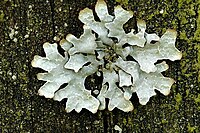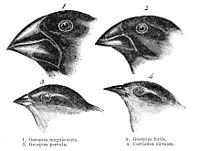
Phylogenomic analysis of 2556 single-copy protein-coding genes resolves most evolutionary relationships for the major clades in the most diverse group of lichen-forming fungi
Sign Up to like & getrecommendations! Published in 2018 at "Fungal Diversity"
DOI: 10.1007/s13225-018-0407-7
Abstract: Phylogenomic datasets continue to enhance our understanding of evolutionary relationships in many lineages of organisms. However, genome-scale data have not been widely implemented in reconstructing relationships in lichenized fungi. Here we generate a data set… read more here.
Keywords: lichen forming; major clades; group; topology ... See more keywords

Backbone phylogeny and evolution of Apioideae (Apiaceae): New insights from phylogenomic analyses of plastome data.
Sign Up to like & getrecommendations! Published in 2021 at "Molecular phylogenetics and evolution"
DOI: 10.1016/j.ympev.2021.107183
Abstract: Traditional phylogenies inferred from chloroplast DNA fragments have not obtained a well-resolved evolutionary history for the backbone of Apioideae, the largest subfamily of Apiaceae. In this study, we applied the genome skimming approach of next-generation… read more here.
Keywords: major clades; plastome data; backbone phylogeny; evolution apioideae ... See more keywords

Phylogenomic analyses of Camellia support reticulate evolution among major clades.
Sign Up to like & getrecommendations! Published in 2023 at "Molecular phylogenetics and evolution"
DOI: 10.2139/ssrn.4299921
Abstract: Camellia (Theaceae) is a morphologically highly diverse genus of flowering plants and includes many famous species with high economic value, and the phylogeny of this genus is not fully resolved. We used 98 transcriptomes from… read more here.
Keywords: reticulate evolution; among major; evolution; support reticulate ... See more keywords